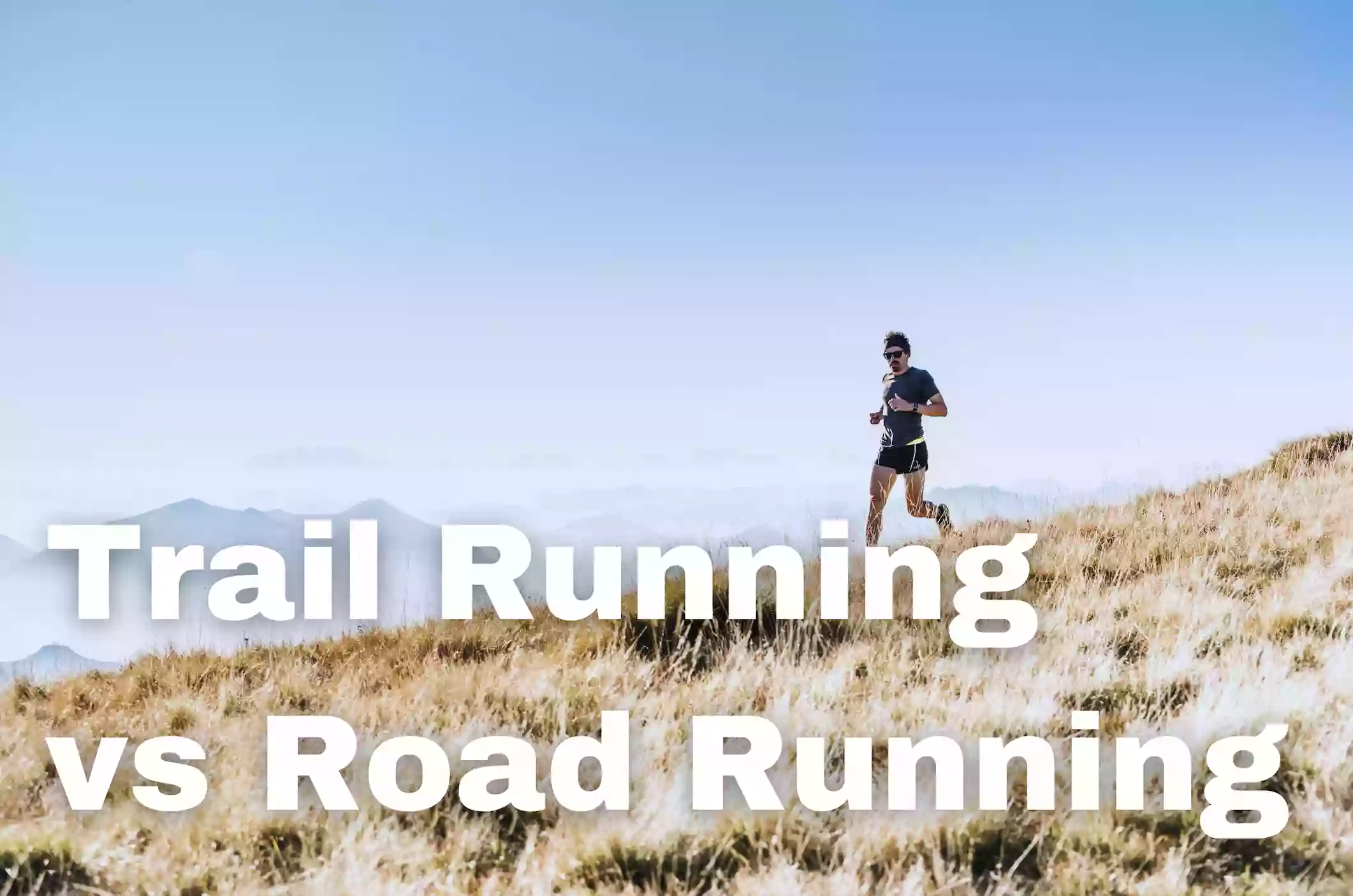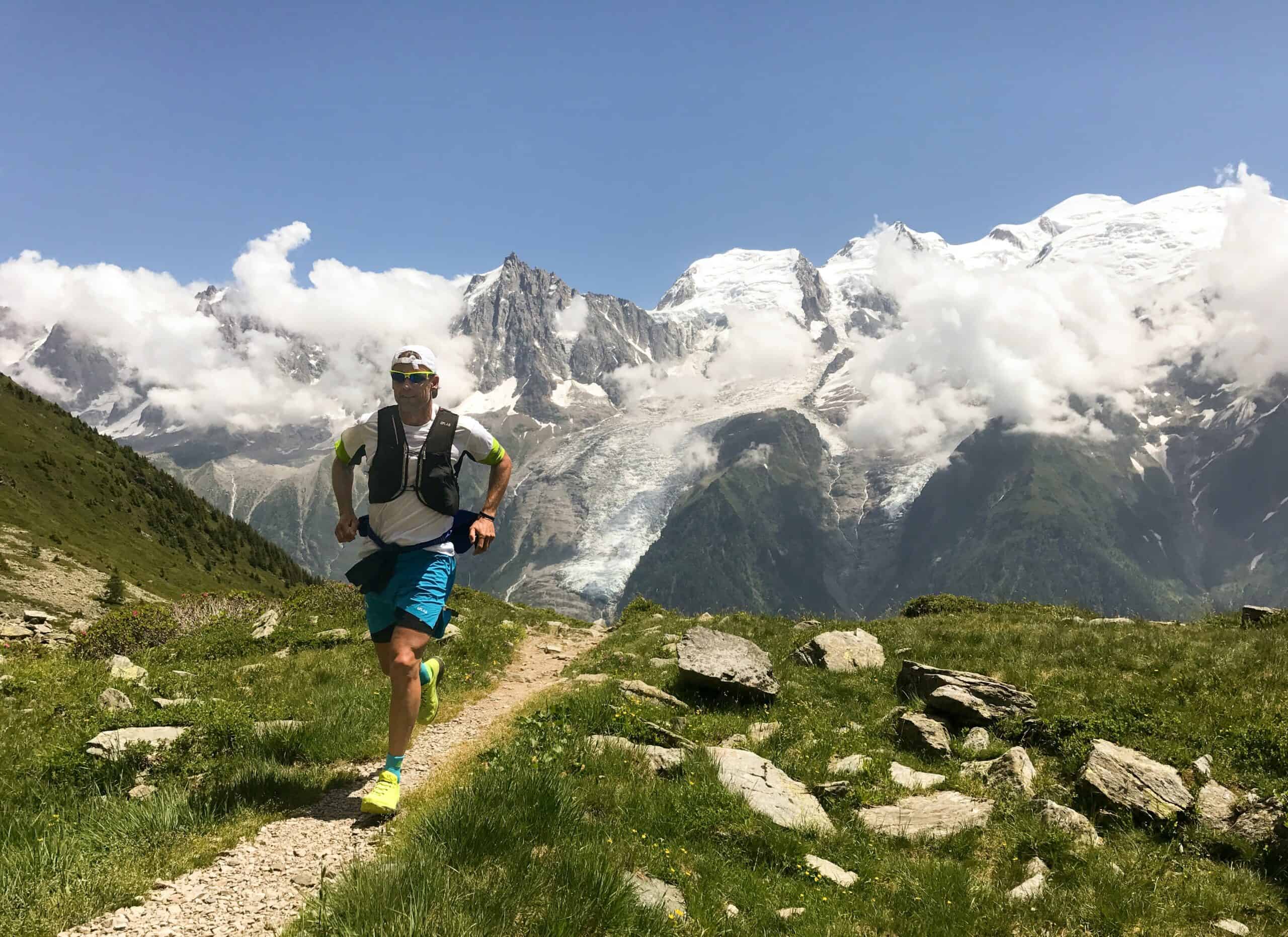Should you ditch your road running shoes in favor of a pair of Gore-tex waterproof running shoes? If you’ve been running for any amount of time or have seen a dirt path before, you’ve most definitely heard of trail running. And, you’ve probably asked yourself – what’s the difference between trail running vs road running?
Trade the concrete for trees, dirt, and a breath or two of fresh air with stunning views is a must for all runners at one point or another.
And if you really enjoy it, perhaps you’ll find yourself getting lost in nature regularly.
Whether you’re training for a trail half marathon or cross-training for a road race, trail running might make sense for you to incorporate into your running mix.
In this article we’re covering:
- The key difference in a runner’s approach to trail running vs road running
- The benefits of trail running to a road runner
- The downsides of trail running to a road runner
- The benefits of road running to a trail runner
- The downsides of road running to a trail runner

What’s the difference between trail running vs road running?
It’s not complicated to figure out, it’s the running surface.
Road running is run almost exclusively on the roads and pavement, a harder surface.
It may include short off-road sections, but most of your run is spent on concrete, pavement, and asphalt.
On the other hand, trail running is any running on more natural type of terrain, often on uneven surfaces.
A natural terrain is often a softer surface. A typical trail running route includes grass, rocks, dirt paths, and sometimes mud. There’s also a lot of undulations to keep you on your toes.
More importantly, how does the difference in the surface hardness impact you, the runner?
Related: The Beginner’s Guide to Trail Running
What are the benefits of trail running?
Let’s say it’s a Sunday. You can go out for a run on either a nice loop of street around your house or, you can attempt to run your weekend miles on trails.
What’s the difference between one and the other? Is trail running better for some reasons and not others?
Here’s a few reasons you might want to select a trail.
Cross-training on different surfaces is beneficial for your running
A 2008 study looked at 291 runners and how the running surface impacted their rate at which they had tendinopathy, another word for an overuse tendon injury.
At some point, in the study nearly 60% of the runners had Achilles tendon issues and nearly 50% knee pain issue. The group that ran on asphalt had a lower risk of injury.
Related: The Best Running Shoes If You Have Bad Knees
So, why might training across multiple different surfaces be beneficial?
A 2023 study found athletes who trained across different surfaces helped reduce the risk of injury associated with running prolonged distances on one surface type.
Short and sweet: Running on different surfaces helps support stronger running technique, biometrics, and will help reduce injuries while training.
Trail terrain can be challenging
You can see this as a pro or a con, but we see it as a benefit!
No two trails are quite the same. Many trails have a lot of elevation and tricky underfoot conditions.
The challenging conditions keep your run exciting. Maybe you’ll be jumping a stream, dodging fallen branches, or pushing the palms of your hands into your legs to drive you up that steep climb. If you want a challenge, head for the trails. But make sure to wear a pair of proper trail running shoes!
However, if you’re a beginner trail runner and don’t want to pay that much attention to the type of terrain you’re running on, stick to your neighborhood sidewalks.
It’s an excellent workout
Trail running is tough, but that’s also what makes it so fun!
A 2023 study found that trail running was slightly more beneficial for balance and leg strength improvements compared to road running, more upper leg strength, and static balance (or, the ability to stand upright while standing still).
The study found that those lower body health benefits directly translated to the prevention of falls and fall-related injuries.
As you start to become self-sufficient on trails, you may want to take your trail training step further, and can incorporate different types of runs like hill repeats on the trails.
It’s recommended for all runners, even if you’re training on trails which have these muscle benefits, that strength training for runners is one of the most beneficial practices for performance improvement and injury reduction.
Trail running is good for your mental health
Research shows that running can improve mood and mental health — but, that’s not just trail running.
However what is unique to trail running is that being in nature is also associated with improved mental health outcomes and cognitive function, as found by one study.
Combine these two practices as beneficial for your mental health and you may find the impacts on your happiness to be measurable.
What are the downsides of trail running?
It’s more difficult than road running
Although a breath of fresh air and a welcomed change of scenery, most trails are more difficult than your standard route on the roads.
This might be because the technicality of the terrain (soft dirt is harder to maintain a faster pace on than concrete due to the fact that harder surfaces return energy better.)
You’ll need to run trail running technique
If you try your usual running technique and pacing strategy on the trails, then you’ll only get so far. Trail running requires new skills. You’ll need to learn the basics of how to ascend steep inclines, descend safely, navigate trail paths, and make your way safely through slippery, wet, and uneven terrains.
But don’t worry; the more you run on the trails, the better you’ll get at these skills.
If it’s your first time, then you may be tempted to look at your watch and pace yourself like you would on the roads. That’s a bad idea! Instead, pace yourself based on effort.
If it’s your first time trail running, our advice is to run very slowly.
You’re may be more likely to get injured
Although trail running is typically easier on the joints, it is still possible to get injured.
One study reported 359 trail runners reported a trail running injury with 872 injury occurrences (there was a total of 1,016 respondents).
The most common injury type was a rolled or sprained ankle. The results suggest that trail running injuries differ from road running, where more traumatic injuries, such as knee pain, are more dominant.
So, while you’re more likely to sustain an injury trail running, chances are it’ll be a lot less severe than a road running injury.
To reduce your injury risk, practice your downhill running form and wear a proper pair of trail running shoes — these will keep you upright and prevent you from slipping.
Look for and invest into trail running gear and a pair of shoes with solid traction, a tough outsole and deep lugs for extra traction in the wet.
The best trail running shoes contain thick rubber lugs for extra grip on uneven ground and more technical terrain. A good choice is the Hoka Speedgoat 5 — a well-rounded trail running shoe perfect for technical trails and off-road running.
You need to buy more running gear
If you plan on making trail running a regular thing, then you should invest in more running gear.
As a basic requirement, you should buy a pair of specialized trail running shoes.
If you intend on going long, then a hydration vest or running backpack is recommended. It’s also a good idea to bring running safety gear like a basic first aid kit.

What are the benefits of road running?
If you live in an urban area and don’t have access to trails, you might wonder if it’s worth the time and hassle to find trails to run on.
Consider these are the pros and cons of road running and determine whether it’s a good idea to diversify your training surfaces.
For many, road running is more convenient
For most runners, running on the roads is going to be more convenient than the trails, especially if you live in a city.
Because the roads are more accessible, you’re more likely to stick to your training schedule as opposed to driving, say, 20-30 minutes to your nearest trail.
It’s easier to pace yourself
It’s a lot more difficult to pace yourself on the trails than on the roads. The largest factor of difficulty pacing is the altitudes and changes in elevation you’ll find on trails.
It’s it’s just a long run with no specific pace, a trail might be a good option for you. But, if this is the final long run before a road half marathon, you’ll want to make sure you’re picking a surface where you can maintain your half marathon pace.
Most roads are relatively flat. This makes it easier to pace yourself for certain workouts, such as mile repeats and other types of interval training.
Road running is more accessible for beginners
If you’ve recently just started running, then naturally, any type of run will be somewhat difficult. If you’re just starting out, it may be smart to stick to relatively flat ground for your first few weeks.
A lot of runners start running on the roads and pavements and later add trail running into their routine.
Road running is easier for measuring certain goals
If you’re training for your first half marathon, you’ll mostly be focused on slowly increasing your mileage to ensure you can handle the thirteen mile distance at your race pace.
As you desire to improve, you’ll be focused on different types of running and different measurements in order to track your progress.
For example, you may be looking to increase how much slow running you do in a Zone 2 heart rate, which is an accurate predictor of increasing your endurance.
Or, you may be looking to do track workouts for distance runners so you can more easily measure how quickly you can run 400 meters around a track.
Incorporating technical trails, elevation changes, and environmental factors won’t provide you a consistent enough environment to track these helpful metrics week after week.
What are the downsides of road running?
Over a long enough period road running may be harder on the joints
In a 2023 study on PubMed, an analysis found that running on concrete surfaces indicated that prolonged periods of training on hard surfaces could lead to an increased in injuries.
Running on hard ground, such as concrete and other paved surfaces, places more stress and force on the joints vs. running on softer ground. This increases your risk of an overuse injury, such as shin splints, Achilles tendinitis, IT band syndrome, and stress fractures.
It can become monotonous after a while
After a while, your regular running routes can become boring.
If you live in one place, then there are only so many routes you can take without traveling somewhere to mix up the scenery.
If you notice your running becoming stale, you can mix up the scenery by adding a trail or two once in a while.

Trail running vs road running: Which is better for you
For many runners, trail running is more enjoyable than road running because:
- The scenery and experience of being in nature can improve happiness
- Running on trails improves lower body stability and strength which decreases those running injuries
- Running on trails with elevation encourages slower running which is also great for injury reduction
Others prefer road running for convenience and they’re looking to train on the similar surface to their upcoming road half marathon.
It depends entirely on your goals.
The scientific studies are clear that running on a variety of surfaces – trail, concrete, track and otherwise – is the best strategy for injury prevention.
Whatever you choose, whether trail running vs road running, we can help you get faster. Check out our free half marathon training plans today.
How to pick a trail to run on
If you’re looking for a trail to run on our recommendation is to choose a trail guide app like AllTrails in order to select your difficulty, proximity, and reviews from other runners and hikers.
You can also look to Trail Run Project and Trail Link for other running route recommendations.
Trail half marathons, trail races, and trips
If you’re looking for some of the best trail half marathons to train for once you’ve been doing a bit of trail running – here’s our recommendations for our favorites:
- Rogue Expeditions Running Trips in Various Locations
- Moab Trail Half Marathon in Moab, UT
- Napa Valley Trail Half Marathon in Saint Helena, CA
- Pikes Peak Ascent Half Marathon in Manitou Springs, CO
- Golden Leaf Half Marathon in Aspen, CO
- Grand Island Trail Half Marathon in Munising, MI
- Antelope Canyon Half Marathon in Page, AZ
- Grand Canyon Trail Half Marathon in Grand Canyon Village, AZ
- Zion Half Marathon in Springdale, UT
FAQs
Are trail running shoes heavier than road runners?
Yes, a lot of trail running shoes are heavier than road running shoes because they contain extra cushioning and protection for the trails. Some shoes contain a rock plate for extra protection.
Which is better for your joints?
Trail running on softer ground is typically better for your joints than running on concrete on the roads and pavements.
Is trail running harder than pavement?
Trail running is often more challenging than running on the pavement. This is because trails often include uneven terrain with a mix of elevation.




